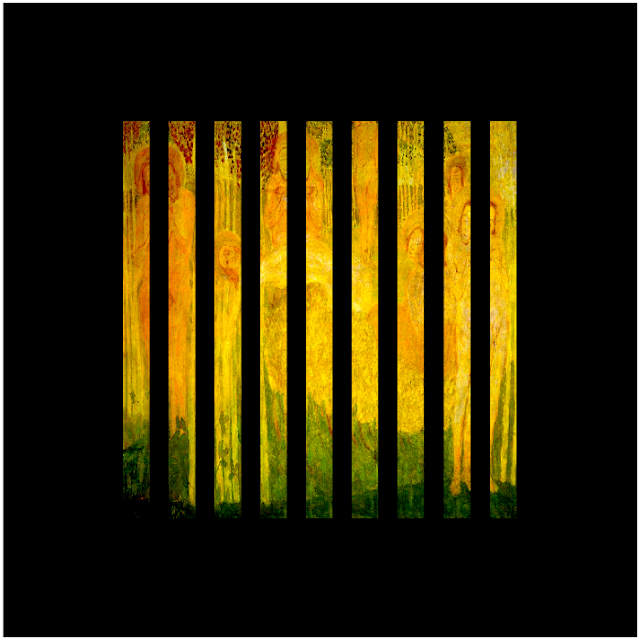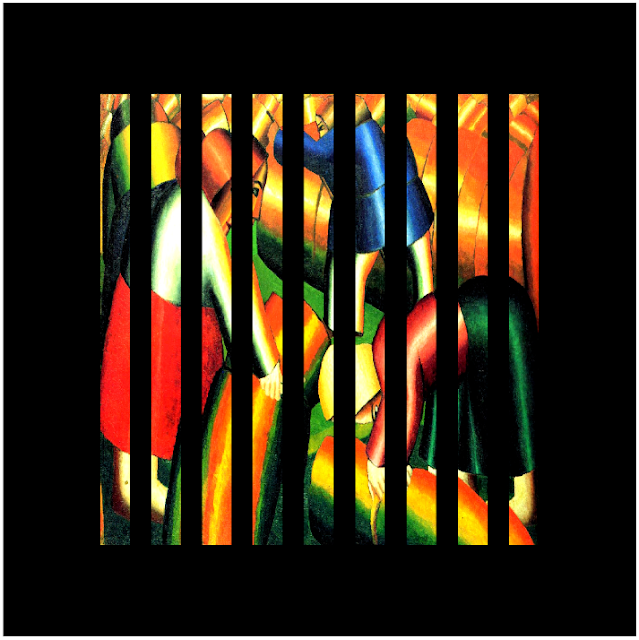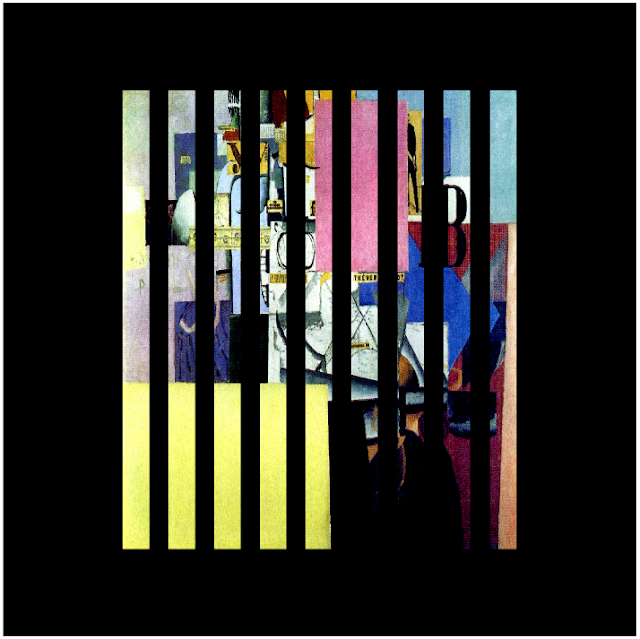BLACK SQUARE DISPLACEMENT - Utilization of Kazimir Malevich's Artworks, 1900-1914
BLACK SQUARE DISPLACEMENT - Utilization of Kazimir Malevich's Artworks, 1900-1914.
Kazimir Malevich's "Black Square" is utilized as a transformational zone to displace his artworks, 1900-1914. These artworks were created prior to his Suprematism and "Black Square". Malevich might approve of this treatment since he became bored with most, if not all, art movements and their creations. More than likely, he looked back on his early artworks ... including his Cubist experimentations ... in the same manner, and probably wondered why he had not reached the Suprematist state sooner.
To displace is to move or shift into a new position or place, both in a concrete and in an abstract sense. This shift in the following "Black Square Displacement" images transforms Malevich's artworks into abstractions that go beyond the art movements ...
Impressionism, Pointillism, Symbolism, Post-Impressionism, Cloisonnism, Art Nouveau (Modern), Fauvism, Naïve Art (Primitivism), Cubism, Cubo-Futurism, Expressionism
... in which he was working, 1900-1914. The displaced images are "broken" ... "out of the norm" ... as it relates to their respective art movements. The nine panels created by the displacement represent the number "9", which is a symbol of completeness and finality.
Malevich stated that his "Black Square" ... first exhibited in December of 1915 during the exhibition, The Last Exhibition of Futurist Painting 0.10 (Zero-Ten) in Petrograd (Saint Petersburg) Russia ... represented "ground zero" - an "end" (finality) and a new start in the history of art.
Again, these displacements on Malevich's "Black Square" are indicative of his journey within his early artworks (1900-1914) to eventually arrive at Suprematism. The shifting (movement) seen in the images are reflected in his Suprematist works of 1915 and later.
On a "baser" note, the displaced images could be interpreted as a view through a prison cell. In autumn 1930, Malevich was arrested and interrogated by the KGB in Leningrad, accused of Polish espionage, and threatened with execution. He was released from imprisonment in early December.
The government of Joseph Stalin turned against forms of abstraction, considering them a type of "bourgeois" art, that could not express social realities. As a consequence, many of his works were confiscated and he was banned from creating and exhibiting similar art. Critics derided Malevich's art as a negation of everything good and pure: love of life and love of nature. (Wp)
























































Comments
Post a Comment